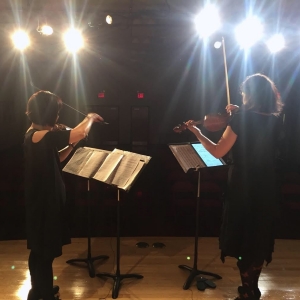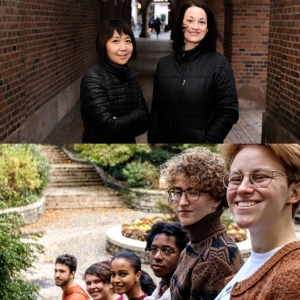
At a Glance
Time Needed: 60 min.
Ages: All
Allows Food/Drink: No
Luggage Storage: No
39 Battery Pl, New York, NY 10280 Get Directions
The Skyscraper Museum Videos
In his new book, Men at Work: The Empire State Building and the Untold Story of the Craftsmen who Built It, Glenn Kurtz re-examines the familiar story of the Empire State’s amazing construction from a perspective that has stumped previous researchers: the lives of workers who labored daily on the site. Taking the iconic photographs of Lewis W. Hine, collected in his 1932 book Men at Work as a starting point, Kurtz delved into archives, period newspapers, and corporate communications to retrieve the identities of the craftsmen that history has seen as “anonymous” symbols. Kurtz sets the Hine portraits in a new light: as specific documentation of the ordinary, mostly immigrant, men who built the world’s most famous skyscraper. Glenn Kurtz Glenn Kurtz is the author of Three Minutes in Poland: Discovering a Lost World in a 1938 Family Film, which was named a Best Book of 2014 by The New Yorker, The Boston Globe, and National Public Radio. Three Minutes: A Lengthening, a documentary film based on the book, was directed by Bianca Stigter, co-produced by Academy Award winner Steve McQueen, and narrated by Helena Bonham-Carter. It received the inaugural Yad Vashem Award for Holocaust Documentary in 2022 and was an official selection of the Sundance Film Festival. Glenn’s first book, Practicing: A Musician’s Return to Music, earned critical acclaim from the New York Times, Newsday, the Los Angeles Times, and National Public Radio.
Chicago’s tallest skyscraper when it opened in 1921, the Wrigley Building could be called the Midwest's Woolworth Building. The gleaming white terra-cotta tower at the head of Michigan Avenue marked a move that opened the northward extension of the commercial concentration of the Loop. To celebrate the publication of the handsome new monograph The Wrigley Building: The Making of an Icon, the Museum convened a two-session program that featured a presentation by the book's authors and a symposium of scholars that placed the building in context and contrast to the contemporary towers of New York. In the opening session, principal author Robert Sharoff, the Chicago historian Tim Samuelson, and the photographer William Zbaren offered an overview of the book's ambitious scope, which brings together archival sources and stunning new photography to document a century’s worth of architectural, social, and business history. They highlighted the intertwined stories of William Wrigley Jr., the larger-than-life founder of the chewing gum empire, and the relatively unknown architect Charles Gerhard Beersman, as well as evoked the interior life of the tower as a hub for everything from modernist art and jazz to groundbreaking advertising and broadcast media. After a break, the second session featured a panel with skyscraper historians Gail Fenske and Thomas Leslie, as well as artist and publisher Don LePan. They responded to the authors and engaged in a playfully serious discussion of the "Chicago-ness" of Wrigley and the "New York-ness" of Woolworth as city-signature terra cotta towers. ROBERT SHAROFF Robert Sharoff is a Chicago-based writer on arts and culture. A frequent collaborator with William Zbaren, their books include American City: Detroit Architecture (Wayne State University Press, 2005) and Last is More: Mies, IBM, and the Transformation of Chicago (Images Publishing Group, 2014). Having worked as a journalist for many years, Sharoff portrays his subjects with unflagging insight and digs deep to uncover the correct facts. He is a prolific writer for the New York Times, Chicago Magazine, and the Washington Post. TIM SAMUELSON Tim Samuelson is Chicago's first and only cultural historian. For nearly 20 years he acted as spokesman, consultant, historian, and storyteller for various groups in Chicago and beyond while also building a vast collection of Chicago's architecture artifacts, pictorial history, and ephemera. Before the Cultural Center, Samuelson worked at the Chicago History Museum and served on the Commission on Chicago Landmarks. Today, he is retired, but retains an emeritus position at the Cultural Center. In 2015, Landmarks Illinois names Tim himself a "Legendary Landmark." WILLIAM ZBAREN William Zbaren is an award-winning architectural photographer whose work has been featured in the New York Times, Architectural Record, the Wall Street Journal, and other publications. He is a frequent collaborator with Robert Sharoff; their books include American City: St. Louis Architecture, Three Centuries of Classic Design (Images Publishing Group, 2011) and John Vinci: Life and Landmarks (Northwestern University Press, 2017). Zbaren has been praised for his ability to convey a sense of impact and to direct one's eyes to often overlooked qualities in buildings. Mr. Zbaren is also a professor of architectural photography at the Illinois Institute of Technology in Chicago. GAIL FENSKE Gail Fenske is author of The Skyscraper and the City: The Woolworth Building and the Making of Modern New York (University of Chicago Press, 2008). She is professor of architecture in the School of Architecture, Art & Historic Preservation at Roger Williams University, and has taught as a visiting professor at Cornell, Wellesley, and MIT. She is also a licensed architect and has practiced architecture in Boston and New York. She holds a Ph.D. in the history, theory, and criticism of architecture from MIT. THOMAS LESLIE Thomas Leslie is Professor of Architecture at the University of Illinois Urbana-Champaign where he researches the integration of building sciences and arts, both historically and in contemporary practice. He is the author of Chicago Skyscrapers, 1871-1934 and its sequel Chicago Skyscrapers, 1934-1986 (Champaign: University of Illinois Press, 2013 and 2023). He is also the author of Beauty's Rigor: Patterns of Production in the Work of Pier Luigi Nervi (University of Illinois Press, 2017). DON LEPAN Don LePan is the founder and CEO of Broadview Press, a leading academic book publisher in North America. He is the Managing Editor of The Broadview Anthology of British Literature (Broadview, 2006) and the author of Animals: A Novel (Véhicule Press, 2009) and Lucy and Bonbon: A Novel (MiroLand, 2022). LePan is also a painter and the author of the forthcoming The Skyscraper and the City (late 2025) which brings together thirty years of his watercolor depictions of cities and buildings.
In the postwar decades, Chicago played an outsized role in the historical development of the rise of the concrete skyscraper that was at least as decisive as its famous 19th-century innovations with skeletal steel. Through its local architectural and engineering culture and, equally important, its innovations with material manufactures and construction companies, Chicago helped transform concrete from a handmade craft process into the industrially-produced, precisely-engineered material it is today. Strong relationships between research institutions and industry associations, the city’s volatile real estate and labor markets, as well as a rich tradition of collaboration and knowledge transfer all contributed to Chicago’s lead in high-rise construction in concrete. Significantly, more than half of the roughly 400 Chicago buildings taller than 12 stories erected between 1950 and 1986 were reinforced concrete. Historian of architecture, engineering, and the urban history of Chicago, Thomas Leslie, guest co-curator with Carol Willis for the Museum's exhibition The Modern Concrete Skyscraper, will summarize the new avenues of research that grew from research on the exhibition. This in-person program traces the history of concrete skyscraper construction in Chicago, highlighting how the material challenged the more established steel industry in the city and how local organizations played pivotal roles in advancing concrete technology to new heights. THOMAS LESLIE Thomas Leslie is Professor of Architecture at the University of Illinois Urbana-Champaign where he researches the integration of building sciences and arts, both historically and in contemporary practice. He is the author of Chicago Skyscrapers, 1871-1934 and its sequel Chicago Skyscrapers, 1934-1986 (Champaign: University of Illinois Press, 2013 and 2023). He is also the author of Beauty's Rigor: Patterns of Production in the Work of Pier Luigi Nervi (University of Illinois Press, 2017).
As the US struggles to provide affordable housing, millions of Americans live in deteriorating public housing projects, enduring the mistakes of past housing policy. In his new book The Projects, Howard A. Husock explains how we got here, detailing the tragic rise and fall of public housing and the pitfalls of other subsidy programs. He takes us inside a progressive movement led by a group of New York City philanthropists, politicians, and business magnates who first championed public housing as a solution to urban blight. Yet despite the movement’s lofty ideals, the creation of the Projects led to the destruction of low-income communities across the country. Husock connects the history of public housing with contemporary debates on the government’s role in the housing market. Through interviews with residents, he reveals how public housing transformed the lives of Americans and the physical faces of cities and towns. Mapping out a better path for policy-makers, he lays a new foundation for upward mobility in America. After his talk, Howard Husock engaged in dialogue with Nicholas Dagen Bloom, Professor of Urban Policy and Planning at Hunter College and author of several histories of housing. HOWARD A. HUSOCK Howard A. Husock is Senior Fellow in Domestic Policy Studies at the American Enterprise Institute and the author of many books, including America’s Trillion-Dollar Housing Policy Mistake: The Failure of American Housing Policy, The Poor Side of Town: And Why We Need It, Who Killed Civil Society? The Rise of Big Government and Decline of Bourgeois Norms, and Philanthropy Under Fire. Husock has received many awards for his work as a documentary film producer, including the Robert F. Kennedy Journalism Award, a National News and Documentary Emmy Award, and the Corporation for Public Broadcasting award. His writing has appeared in the New York Times, New York Times Magazine, Wall Street Journal, and many other leading publications. NICHOLAS DAGEN BLOOM Nicholas Dagen Bloom is a Professor of Urban Policy and Planning at Hunter College. Bloom's research analyzes long-term planning outcomes in essential urban systems. Among his books are Public Housing That Worked, How States Shaped Postwar America, and and The Great American Transit Disaster: Austerity, Autocentric Planning, and White Flight. He is co-editor of four edited collections, including the prize-winning Public Housing Myths and Affordable Housing in New York.
In her new book Albert Kahn Inc.: Architecture, Labor, and Industry, 1905–1961, Claire Zimmerman charts a history of second-wave industrialization associated with the growth and development of the United States auto industry and its global footprint. Her case study of the architecture firm most closely associated with the major auto companies in Detroit explores how industrial capitalism fueled campuses of the auto industry and helped catalyze the militarization of industry. While the book theorizes how capitalism drives the development of built environments (industrial or other), it also focuses specifically on three stages of architectural production: the design, construction, and occupation of buildings. The product of a decade of research, AKI combines analysis of architecture after industrialization with 140 illustrations drawn chiefly from Detroit-area archives, in a new study of modern architecture. CLAIRE ZIMMERMAN Claire Zimmerman is Professor of Architecture at the University of Toronto Daniels Faculty, where she directs the PhD program in Architecture, Landscape, and Design. She is the author of Photographic Architecture in the Twentieth Century (Minnesota, 2014) and Ludwig Mies van der Rohe (Taschen, 2006), and coeditor of Architecture against Democracy: Histories of the Nationalist International (Minnesota 2024) and Detroit-Moscow-Detroit: An Architecture for Industrialization (MIT Press, 2023), among other books and articles.
More in Financial District
More Museums
- The Tenement Museum
- New Museum
- International Center of Photography
- Museum at Eldridge Street
- National Museum of the American Indian
- National September 11 Memorial & Museum
- The Rubin Museum of Art
- Whitney Museum of American Art
- The Morgan Library & Museum
- Museum of Modern Art (MoMA)
The Skyscraper Museum Frequently Asked Questions
The closest subway stops to The Skyscraper Museum at 39 Battery Pl in New York City are:
1. Bowling Green (4, 5 trains): Located just a short walk away from the museum, this subway stop is convenient for visitors coming from various parts of the city. You can check the latest subway updates and schedules at the official MTA website: http://www.mta.info.
2. Whitehall St-South Ferry (1, R, W trains): Another nearby subway stop, Whitehall St-South Ferry provides easy access to The Skyscraper Museum. Be sure to check for any subway service changes or delays before your visit.
While you're in the area, I recommend checking out some other attractions and dining options nearby:
1. Battery Park: Enjoy a stroll through Battery Park, located right by The Skyscraper Museum. This beautiful waterfront park offers stunning views of the Statue of Liberty and is a great spot to relax and soak in the atmosphere.
2. Statue of Liberty and Ellis Island: If you have the time, consider taking a ferry ride to visit the Statue of Liberty and Ellis Island. These iconic landmarks are a must-see for any visitor to New York City. You can find more information and purchase tickets at the official website: https://www.nps.gov/stli/index.htm.
3. Stone Street: For a unique dining experience, head over to Stone Street, a historic cobblestone street lined with restaurants and outdoor seating. It's a great place to grab a bite to eat and enjoy the lively atmosphere.
I hope you have a fantastic time exploring The Skyscraper Museum and the surrounding area!
The closest bus stops to The Skyscraper Museum at 39 Battery Pl in New York City are:
1. South End Avenue/West Thames Street - served by the M20 bus. You can check for updates on the M20 bus schedule [here](http://bustime.mta.info/m/index?q=400293).
2. South End Avenue/Albany Street - served by the M9 bus. You can check for updates on the M9 bus schedule [here](http://bustime.mta.info/m/index?q=400291).
These bus stops are conveniently located near The Skyscraper Museum, making it easy to reach the museum by public transportation. Enjoy your visit!
The ideal length of time to plan for a visit to The Skyscraper Museum in New York City is approximately 1 to 2 hours. This should give you enough time to explore the museum's exhibits, learn about the history and development of skyscrapers, and appreciate the architectural wonders on display. However, if you are particularly interested in the subject matter or enjoy reading detailed information, you may want to allocate a bit more time to fully immerse yourself in the museum's offerings. Remember, it's always better to have a little extra time than to feel rushed during your visit. Enjoy your time at The Skyscraper Museum!
The Skyscraper Museum in New York City does not have a food or drink policy. However, please note that food and drinks are not allowed in the exhibition galleries. If you're looking for a bite to eat or a refreshing drink, there are plenty of restaurants and cafes in the surrounding area where you can enjoy a meal before or after your visit.
The Skyscraper Museum in New York City does not have a luggage storage facility. However, there are several options available nearby where you can securely store your luggage while you visit the museum.
One option is to use a luggage storage service. There are several companies in the city that provide this service, allowing you to drop off your bags at a designated location and pick them up later at your convenience. Some popular luggage storage services in New York City include LuggageHero, Vertoe, and Schwartz Luggage Storage.
Another option is to check if your hotel offers luggage storage for guests. Many hotels in the city provide this service, allowing you to store your bags before check-in or after check-out. It's always a good idea to contact your hotel in advance to inquire about their luggage storage policy.
Lastly, if you are visiting other attractions or museums before or after your visit to The Skyscraper Museum, you can check if they offer luggage storage facilities. Some larger museums and tourist attractions in New York City provide lockers or coat check services where you can store your belongings.
Remember to plan ahead and consider your options to ensure a hassle-free visit to The Skyscraper Museum and other attractions in the city.
Yes, The Skyscraper Museum in New York City is definitely worth a visit for visitors from other countries and non-English language speakers. While the museum primarily provides information in English, they do offer free audio guides in multiple languages, including Spanish, French, German, Italian, and Japanese. These audio guides provide detailed explanations about the exhibits and the history of skyscrapers, ensuring that visitors can fully appreciate the museum regardless of their language proficiency.
Additionally, the museum's exhibits are visually engaging and showcase the fascinating evolution of New York City's skyline. From scale models and architectural drawings to interactive displays, there is plenty to see and learn about the iconic skyscrapers that define the city's skyline. Even without understanding the accompanying texts, visitors can still appreciate the impressive visuals and gain a deeper understanding of the architectural marvels that make New York City unique.
Overall, The Skyscraper Museum offers an enriching experience for visitors of all backgrounds, making it a great attraction to explore during your time in New York City.
The Skyscraper Museum in New York City is a fascinating destination for visitors of all ages. While there is no specific recommended age range, the museum's exhibits and displays are designed to engage and educate visitors of all backgrounds and interests. Whether you are a history buff, an architecture enthusiast, or simply curious about the iconic skyscrapers that define New York City's skyline, you will find something of interest at this museum. Families with children can also enjoy the interactive exhibits and learn about the evolution of skyscrapers through fun and educational activities. So, no matter your age, don't miss the opportunity to explore the world of skyscrapers at The Skyscraper Museum!
Videos







